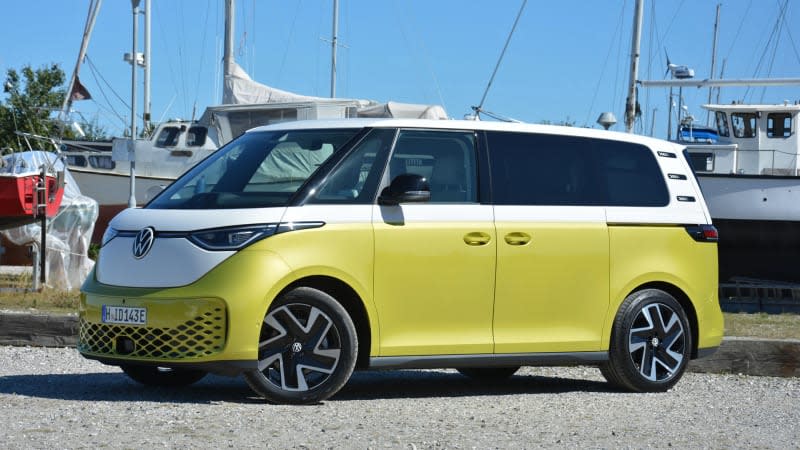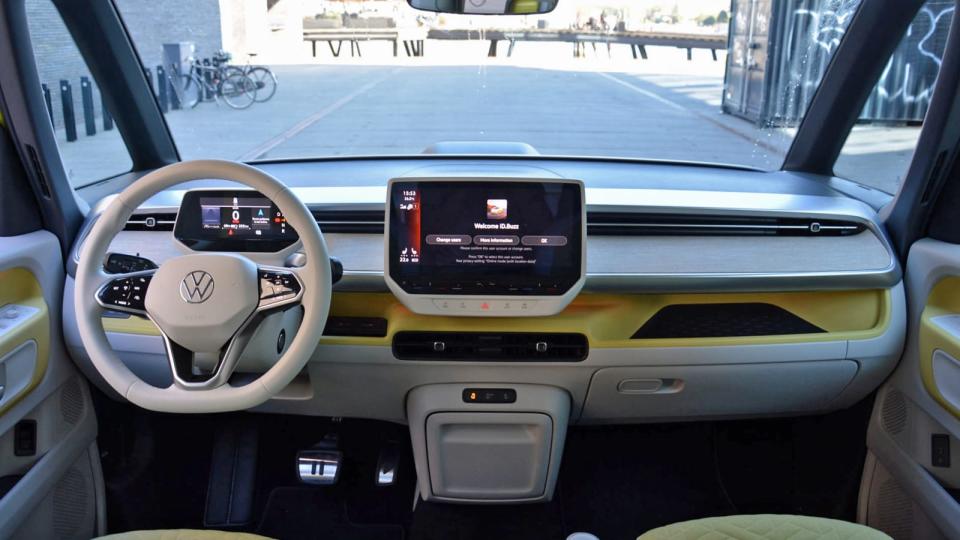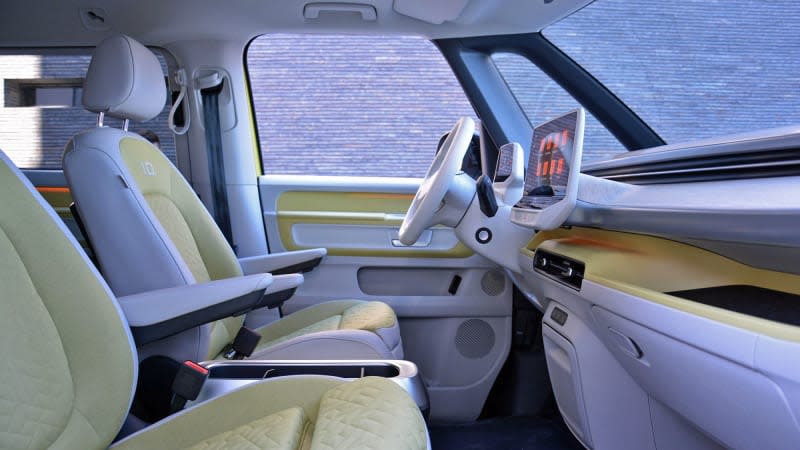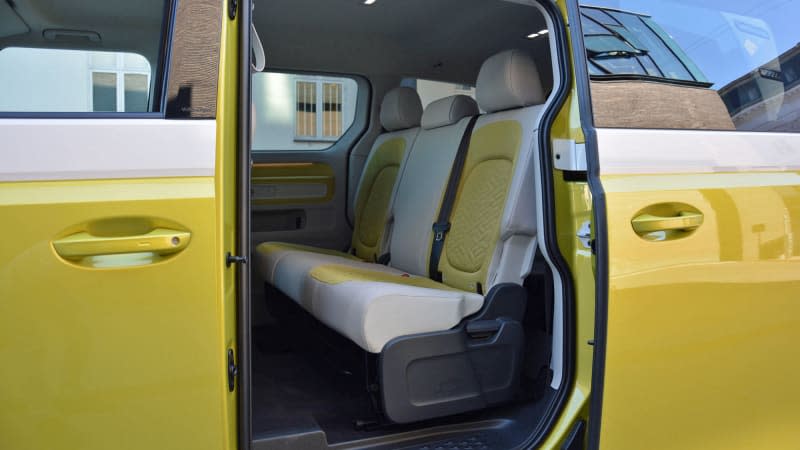VW ID. Buzz First Drive Review: Instantly recognizable (and likable)

COPENHAGEN, Denmark — One interesting aspect of attending a launch event is that the folks who live and work along the drive route see the car for the first time. Some models fly under the radar. The only person who recently noticed the refreshed Volkswagen Polo was an Austrian woman whose lawn I accidentally parked it on to take photos. Others draw crowds everywhere they go. Lamborghinis, of course, but I also unexpectedly spent almost as much time explaining the Citroën C4 Cactus as I did driving it. Unveiled in 2022, the Volkswagen ID. Buzz falls in the latter category.
"It's the new …” I started to explain to the middle-aged, bike-riding couple.
"Ja, ja, we know — it’s the new Volkswagen Bulli!"
Even in Denmark, which isn’t the mecca of car culture, the heritage-inspired van turned head after head. The difference between the Buzz and other head-turners is that nearly everyone knew what they were looking at. They’d spent years waiting see it in the metal. The reaction was more “finally, it’s here!” than “what the hell is this UFO?”


The last time Volkswagen created such a buzz was when it introduced the New Beetle in 1997. That’s fitting because, in a way, the Buzz fills the gap left by the modern-day Beetle when it was discontinued after 2019 and stands proud as the brand’s new style icon. On a secondary level, it concludes a project that Volkswagen has tinkered with on and off for longer than 20 years. The Buzz may be new, but Volkswagen has been toying with resurrecting the emblematic Bus since unveiling the V6-powered Microbus Concept at the 2001 Detroit auto show.
Volkswagen showed a pair of Bus-inspired concepts called Bulli and BUDD-e, respectively, in the 2010s but neither received the proverbial green light for production. Why? Well, it depends on who you ask, but the general consensus is that issues related to safety regulations and that market demand prevented both design studies from moving beyond the concept stage. It wasn’t until the ID.Buzz made its debut at the 2017 Detroit auto show that Volkswagen shifted the project into high gear. In the 1950s, when the first Bus roamed the world’s roads, high gear meant fourth. In the 2020s, it’s first — the Buzz is electric.
In terms of design, not a lot has changed over the past five years. Designers toned down some of the concept’s more futuristic-looking styling cues, like the front and rear lights, and the Buzz received exterior door cameras as well as door mirrors instead of cameras. It also gained a space: Volkswagen expanded the name from ID.Buzz to ID. Buzz. To the consternation of copy editors everywhere, the names ID.3 and ID.4 will remain spaceless. The rest is pretty much what we were promised in 2017: the Buzz’s overall proportions are as boxy and old Bus-like as Volkswagen could make them while still passing a crash test; the “you are the crumple zone” solution of the 1950s doesn’t fly in the 2020s. The Buzz isn’t as retro as, say, the New Beetle but it remains recognizable as the split-window van’s heir.
Here's where the water gets murky: while the Buzz is headed to North America by 2024, what you see in our gallery isn’t exactly what you’ll see at your local Volkswagen dealer. We’ll get a long-wheelbase van that hasn’t been unveiled yet, and Volkswagen stressed it’s too early to provide details about it. For context, the European-spec, short-wheelbase Buzz that I drove in Denmark stretches 185.5 inches long (including a 117.6-inch-long wheelbase), 78.1 inches wide, and about 75.8 inches tall — it’s roughly 18 inches shorter and 5 inches taller than a 2022 Toyota Sienna and almost exactly as wide. It weighs a Ford F-150-like 5,447 pounds due largely to the battery pack that’s under the passenger compartment.




 Yahoo Autos
Yahoo Autos 
